May 21, 2025 | 03:54 GMT +7
May 21, 2025 | 03:54 GMT +7
Hotline: 0913.378.918
May 21, 2025 | 03:54 GMT +7
Hotline: 0913.378.918
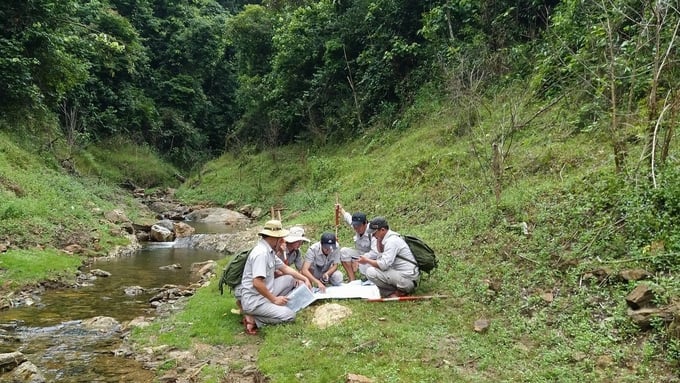
Authorities patrol and protect the forest. Photo: KD.
After more than 12 years of establishment, the Forest Protection and Development Fund of Thua Thien-Hue province has well-implemented policies on payment for forest environmental services (PFES) locally and has achieved many remarkable achievements.
As a policy with its characteristics, affecting many people, especially the majority in remote areas, and ethnic minorities, in recent times, the Fund's Executive Board has always been dynamic and creative with many forms of propaganda, such as reporting, newspapers, policy research contests, unit websites, as well as social networking sites, leaflets, panels, etc.
Along with that, gradually forming, building, and perfecting institutions and bring about economic, environmental, and social benefits. This has brought positive results, mobilizing significant resources for forest management, protection, and development, and improving and enhancing the lives of people living close to forests.
One of the highlights of PFES payments is the Fund's increased use of new technology applications such as remote sensing, GIS, and the smartphone forest patrol application system. These digital methods have helped improve forest management, making work more transparent and effective.
Statistics show that from 2011-2022, the Thua Thien - Hue Forest Protection and Development Fund has spent more than VND 320 billion in PFES money for nearly 600 forest owners. These owners are organization, community, household group and household management. The total forest area under coverage is nearly 160 thousand ha/283 thousand ha of the province's forests (accounting for more than 54%).
This contributes to maintaining the province's forest coverage (57.15%), at the same time, it creates more jobs, bringing significant income to thousands of workers in rural and mountainous areas in the area.
It is expected that from 2023, revenue coming from reducing greenhouse gas emissions according to Decree 107/2022/ND-CP of the Government, will be used to pay for an additional 52 thousand ha of natural forests, reaching 100% of the paid natural forest area. This contributed to increasing the total forest area paid for to nearly 211 thousand ha of forest, accounting for more than 75% of the entire province's forest area.
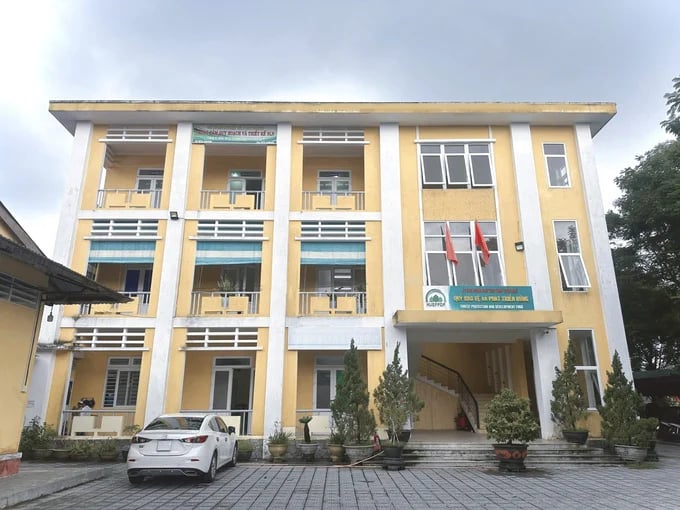
Thua Thien - Hue Provincial Forest Protection and Development Fund is a public service unit under the People's Committee of Thua Thien - Hue province.
In the context of budget allocation for forest management and protection work is still difficult and limited, the funding source to pay environmental services for forestry companies, and forest management boards (BOMs) for protection and special use is very meaningful. It helps forest owners organize and strengthen forest management and protection forces.
Currently, there are six units (without forest ranger organizations) providing environmental services in Thua Thien-Hue province and organizing a specialized forest protection force with 131 people. In addition, 3 organizations signed contracts for 134 local workers, most of whom are ethnic minorities.
In addition, organizational forest owners have also increased contracting for communities, households, and individuals to manage and protect forests to provide PFES. This source of payment has helped significantly strengthen forest protection and management capacity for forest owners who are organizations, people and village/village community management boards; and support investment in the use of modern works and equipment to serve forest protection.
The policy has created a bond between forest owners who are organizations and people living near forests. People and the government, all working together, to carry out forest management and protection.

Payment for PFES contributes to maintaining forest cover in Thua Thien - Hue province.
In particular, some communities in Phong My and Phong Xuan communes of Phong Dien district have used PFES money to support funding for reviewing and placing landmarks to determine the boundaries of the forest area under their management and purchasing tablet equipment to serve forest protection patrols.
PFES has really created opportunities to connect forest owners, who are communities, household groups and households, with the government and state organizations in forestry, contributing to raising people's awareness and capacity to manage and protect forests.
It is a policy with its own characteristics, affecting many people, especially the majority in remote areas and ethnic minorities. Over the past time, the Executive Board of Thua Thien-Hue Provincial Forest Protection and Development Fund has always been dynamic and creative with many forms of propaganda.
With the characteristics of ethnic minorities living in remote villages, transportation has become more difficult than before. Receiving PFES payments faces many difficulties, and even negative situations occur.
In recent years, the application of payment to communities, groups of households, and households by means of bank accounts and electronic payment via ViettelPay has contributed to making this policy more transparent and fair.
Statistics show that in 2022 alone, the amount of non-cash payments to forest owners will be VND 70.89 billion (accounting for 99.7% of the total payment amount). Of which, payments for forest owners who are organizations and Commune People's Committees through 4 Forest Ranger Districts are VND 57.31 billion (reaching 100%), and payments for forest owners who are communities, household groups, and households are VND 13.58 billion (reaching 98.42%).
According to the leader of the Forest Protection and Development Fund of Thua Thien-Hue Province, PFES is a new policy related to many subjects in many fields and lives, especially for a large number of ethnic minorities living along the forest edge.
In order for forest owners, especially mountain people, to properly understand the meaning of PFES payments, the Forest Protection and Development Fund of Thua Thien-Hue province has applied many diverse, rich, lively forms and digital media applications to propagate and disseminate this policy widely to all classes of people, especially communes, wards, and towns in districts and towns such as: A Luoi, Nam Dong, Phong Dien, Phu Loc, and Huong Tra. This is also a place with a large forest area and a concentration of communities, household groups, and households that are implementing the PFES policy.
Translated by Hoang Duy

(VAN) Dong Thap farmers attained an average profit margin of 64% during the summer-autumn 2024 crop (first season), while An Giang and Kien Giang farmers followed with 56% and 54%, respectively.

(VAN) As a doctoral student doing research on renewable energy and electrification at Harvard University, the author shares his musings on electricity, nature, and countryside memories.

(VAN) The decree on Extended Producer Responsibility (EPR) ensures transparent management and disbursement of support funds, avoiding the creation of a “give-and-take” mechanism.

(VAN) Hue City rigorously enforces regulations regarding marine fishing and resource exploitation, with a particular emphasis on the monitoring of fishing vessels to prevent illegal, unreported, and unregulated (IUU) fishing.
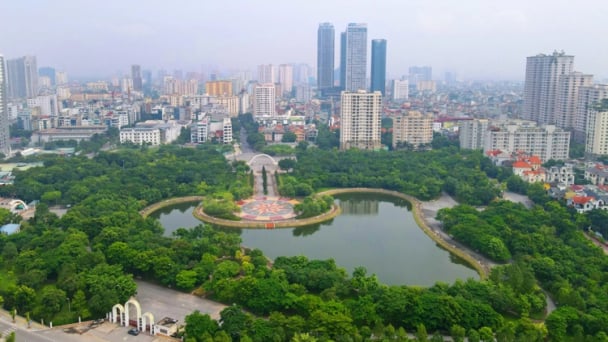
(VAN) Hanoi People's Committee has issued a plan on reducing greenhouse gas emissions in the waste management sector with 2030 vision.
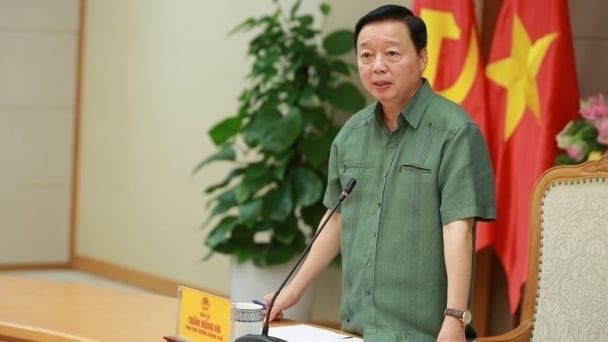
(VAN) Vietnam's draft amendment to Decree No. 156 proposes a mechanism for medicinal herb farming under forest canopies, linking economic development to population retention and the sustainable protection and development of forests.
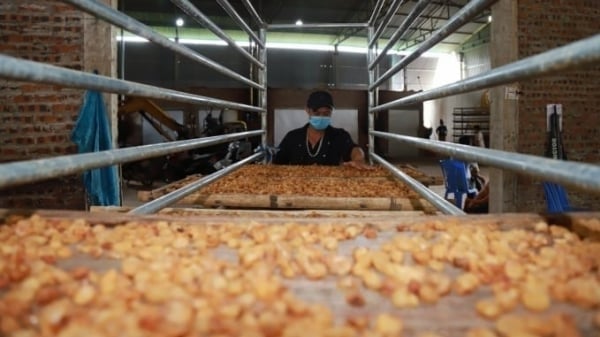
(VAN) In reality, many craft village models combined with tourism in Son La have proven effective, bringing significant economic benefits to rural communities.